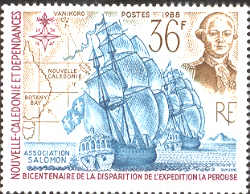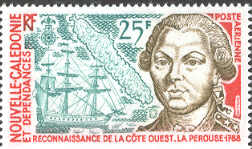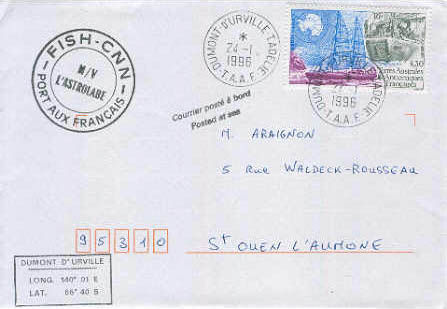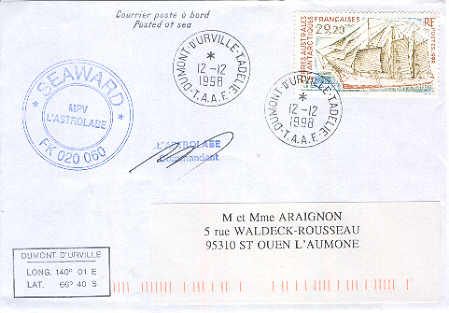
L'ASTROLABE

 |
L'ASTROLABE |
 |
| L'ASTROLABE
is one of the most ancient navigation instruments which measures the angle formed by the horizon and a heavenly body, giving so exact latitude but not longitude. The astrolabe exists from Antiquity (2nd century before JC) where she was designed by Hipparque. The astrolabe was used first by astrologers, particularly Muslims astrologers ( 10th century after JC). Portuguese from 1485 adapt the astrolabe to maritime navigation and draw up tables (regimientos) allowing to calculate magnetic declination. The problem of longitude will be resolved with the invention of the chronometer (2nd half of 18th century). This tool which name comes from two ancient Greek words, meaning "star taker". It is a circular device, made of brass or bronze with 30 to 50 centimetres of diameter ; the degrees are marked off around its circumference and a pointer with sighting vanes on it rotates from the centre of the circle. The navigator uses the pair of sighting holes in the vanes of the alidade for shooting a star.
To shoot the sun, the navigator would hold the astrolabe in such a manner as to allow the sun's rays to pass through the upper vane, turning the alidade until the small beam of light fell on the hole of the lower vane. |
| One of the first sailor to use a chronometer gives the name of Astrolabe to one of his ships. So, Jean-François de GALAUP, comte de LA PEROUSE born in 1741 close to Albi, in the south-west of France, leaves Brest on 1st August 1781 with two ships : la Boussole et L'ASTROLABE, a frigate of 450 tons. | |
|
La BOUSSOLE
|
and L'ASTROLABE, a 450 tons frigate
|
| Officer in the navy, LA PEROUSE leads an expedition of a dozen of scientifics, prepared with the French Academy of Sciences and the Academy of Marine. | |
 |
His trip leads Lapérouse to the Easter Island in April 1786 then he lands the coasts of Alaska. La Boussole et l'Astrolabe go along the American coast until California before to cross Pacific where he makes some mapping in China and Japan Seas. Before Siberia departure, a French diplomat, Barthélémy de Lesseps, uncle of Suez Canal builder, leaves the expedition with Lapérouse log book to take it to France by land way. |
| The two ships join the Samoa in 1787 then in February 1788, they meet an English expedition in an Australia bay, Botany Bay. Commodore Philipp came there to found future Sydney and he is the last European to see la Boussole and L'Astrolabe. | |
 |
| In 1791, la Recherche and l'Espérance under command of admiral
Joseph Bruny
D'ENTRECASTEAUX and Huon de Kermadek go in search of Lapérouse's expedition. Tasmanian coasts and New-Caledonia are explored in detail. |
|
|
|
|
| D'ENTRECASTEAUX approaches of Vanikoro but doesn't accost because of the reefs. The rests of the LA PEROUSE expedition will be found during the journey of Jules DUMONT d'URVILLE. |
|
| This one, born on 23 may 1790 at Condé-sur-Noireau, a small city of Normandy, has yet accomplished several missions : he comes back from Levant with a famous statue called Vénus de Milo ; in 1822, he is second of Louis
DUPERREY on la Coquille. She is a war corvette 31 m long, 8.7 m beam, 3.7 m draft ,displacement 380 tons. Armament 14 canons of 6 pounds. On their world tour they visit Tahiti (may 1823), Australia and New-Zealand, as also the Gilbert Islands. Leaving Toulon on 11-8-1822, they come back to Marseilles on 24 mars after several works in geology, hydrography, physique du globe, zoology and botany. DUPERREY will be president of Sciences Academy in 1850.
The Duperrey corvette COQUILLE, a former horses transport (capacity 46 horses) for cavalry is rechristened ASTROLABE, and leaves Toulon on 25 April 1826. DUMONT d'URVILLE calls long time in Tonga (30 April 1827) at, in New-Guinea then in Tasmania where he learns the le récit of captain Dillon ; ever since, he sails to Vanikoro, at the North of New Hebrides, a dependence of Solomon Islands to find the rests of LA PEROUSE.
|
|
|
| In 1988, Ferronia International Shipping, FISH, subsidiary of Compagnie Nationale de Navigation, takes back the Canadian ice-breaker Fort Resolution, built by Fergusson yards at Glasgow. FISH gives her the name of Terre Adelie discovery ship, ASTROLABE. Equipped of two engines of 3083 hp, with a maximal speed of 14 knots, she has a range of 12000 miles at 12 knots. She is fitted with layouts for 5 officers, 8 crew and 48 passengers. 65m06 long, 13m beam, 4m78 draft, load capacity of 946 tons. Classified A1 class ice-breaker, she can sail at 3 knots in a 1 metre thick ice-pack. The stern is equipped of a 30 cm thick knife. She replaces the Danish ships, and every year, she realises 5 trips between Hobart and Dumont d'Urville between December and March. |
 |
|
L'ASTROLABE is in 1991 the second ship after Nordenskjold VEGA to complete a tour of the euro-asiatic continent : left from Le Havre on 27 July 1991, she reaches Mourmansk on August 3 ; she sails through Bering strait on 27, crossing the North-East passage and reaches Hakodate, in Japan, on September 2 before entering in the Indian Ocean and the Suez canal. |
|
L'ASTROLABE is now property of Seaward, a subsidiary of Bourbon company as Abeilles International, famous for the high seas tugs. |
 |
|
On line
on 25 March 2003 |
Click below for the pages list |
Add Philateliemarine to your favorites
|
|
|